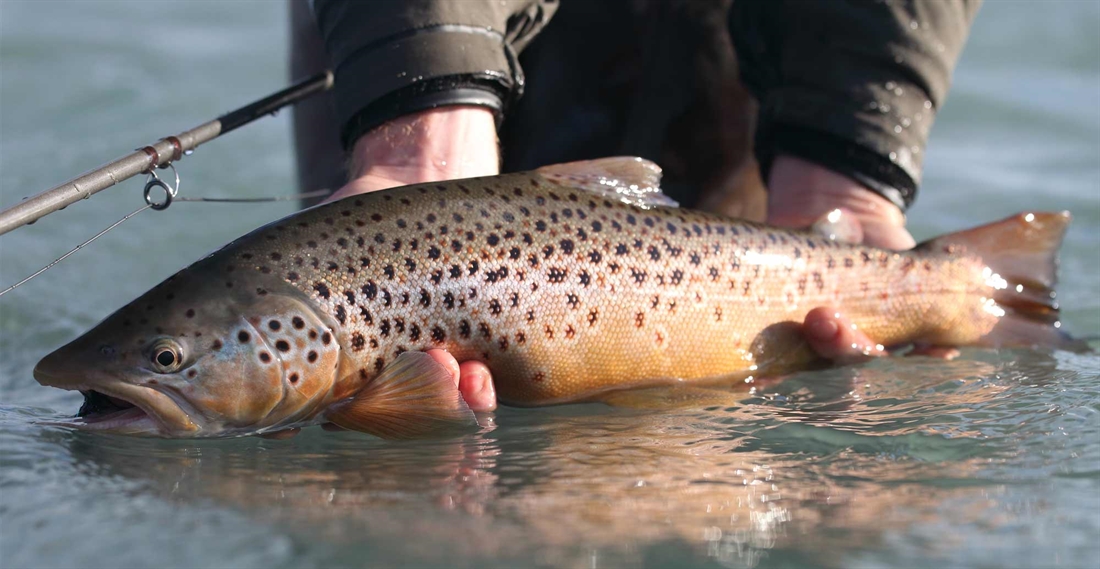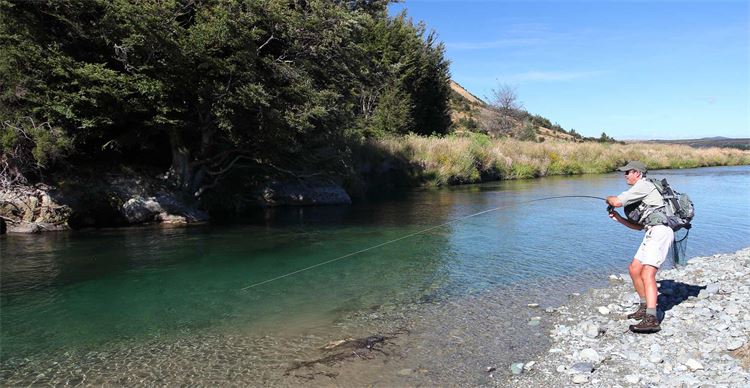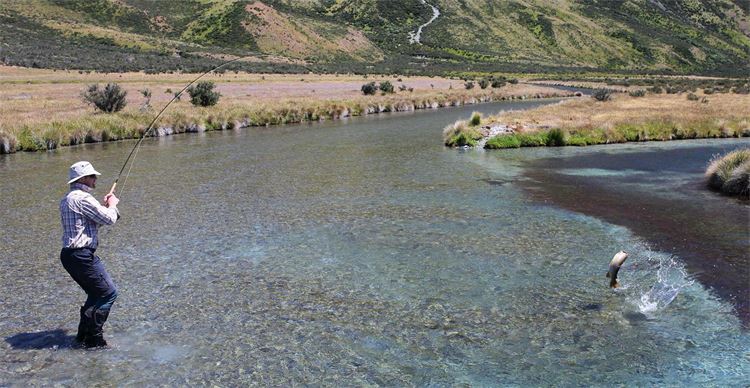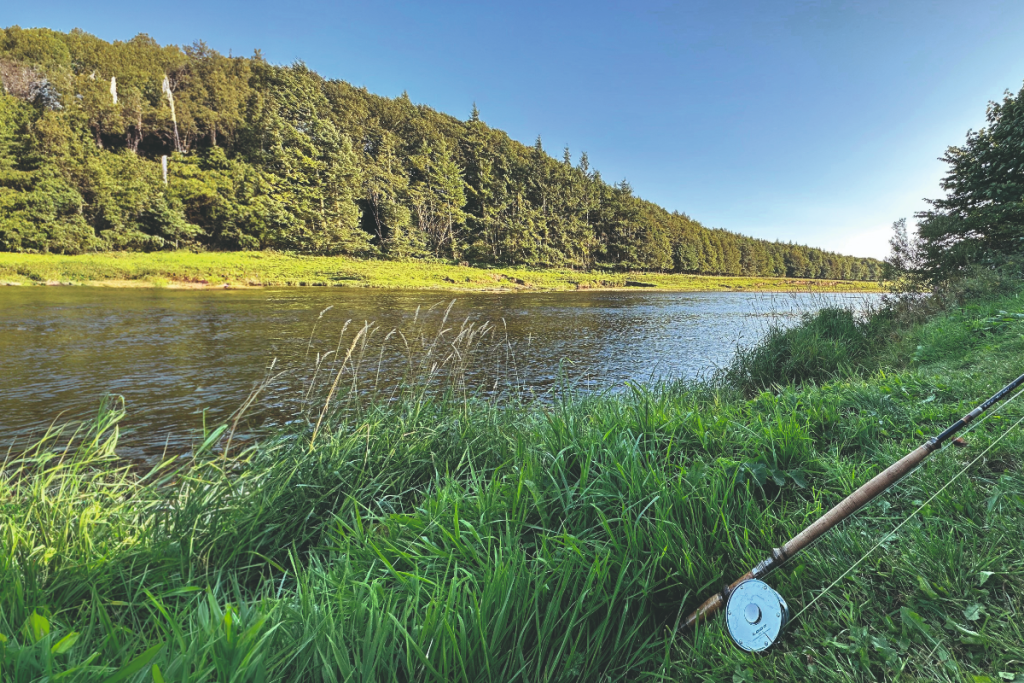Why are big trout big?
Fieldsports Journal investigates the science behind the growth of trout.

Many trout anglers will be driven at some point in their fishing career to try and catch the biggest trout possible, and the thought of posing for a proud grip ‘n’ grin with a giant trophy trout spurs some fishermen and women to extreme lengths. The size of trout that is considered a ‘trophy’ depends on what one’s comparison point is, though. If the net is cast as wide as possible, most anglers would agree that a double-figure fish is a catch of a lifetime.
New Zealand is the destination that springs to mind for those looking to land a trout of this calibre. However, a wild fish over the 10lb mark is a very rare beast in the UK, where most would consider a wild fish of 4lb a milestone of sorts. In some parts of the country this is a viable proposition from both lakes and rivers. Elsewhere, such as in the West Country, catching a 4lb brownie from a river is the stuff of dreams.
When considering this variation in the maximum size that trout can attain, some anglers might shrug and say, “Well, that’s just the way it is”, whereas for me it is a fascinating topic. We can broadly consider the question of why some trout get so much bigger than others as consisting of two topics: the first is why some rivers or areas of the world produce trout that get so big; and the second is why some individual trout get so much bigger than their peers.
The first thing to state is that difference in size isn’t generally a matter of age. The maximum age of wild trout tends to be fairly constant across different waters, unless they inhabit a particularly benign area with few predators. So, while trout get bigger as they age, it isn’t simply a case that big trout from a particular river or lake are bigger because they have been around for longer – the main reason is that they grow faster.
As soon as you start thinking about this, it seems instantly obvious why this might be the case and indeed it is relatively simple for the most part. The key factor is food. Trout in a river like the Eden, Usk or Test are often able to attain weights of 3lb or more because they have plenty to eat. Trout in a river like the Dart or a Highland stream simply don’t have the same feeding opportunities and therefore don’t achieve the same kind of size as their more satiated brethren.
In some rivers it is relatively easy to explain why trout aren’t able to grow quickly. A low-nutrient, acidic environment with a short season of optimal temperatures for growth is not conducive to the production of aquatic invertebrates and there is subsequently a limit on the potential growth of trout, which typically rely on invertebrates as a source of food. In such rivers, a proportion of the trout solve this problem by migrating to sea where food is more plentiful. Gorging themselves on this marine buffet, they then return to the river months or years later at a size they could never have hoped to achieve if they had remained in their river of origin. In contrast, rivers where ‘resident’ trout grow to large sizes typically enjoy prolific hatches and a kick-sample will reveal an abundance of bugs – some trout may still choose to take their chances and head to sea.
It is interesting to contemplate the patterns of trout size across the UK, as well as why these patterns exist. Chalkstream trout often grow very quickly and it is easy to understand why. A stable temperature regime and an abundance of food (just think of the spectacle of a heavy mayfly hatch) provide ideal conditions for trout growth. Go west and the situation is very different. Devon and Cornwall may be home to healthy populations of trout, but they tend not to be very big, often due to the reasons mentioned previously: low-nutrient rivers with limited feeding opportunities.
What is interesting, however, is that I am increasingly learning that this wasn’t necessarily always the case. For some time I have pondered why the River Exe – largely a lowland river flowing through fertile land – does not contain large trout when a relatively similar river further north like the Eden or Annan does? Anecdotally I’ve learned that the Exe may once have been different. I have heard stories from more than one person of a time when 2lb–3lb trout were common; fish that now, by all accounts, are a thing of the past. Talking to those with longer memories and more experience than me would suggest that this has gone hand in hand with a dramatic reduction in hatches on the river, as well as on many other rivers in the West Country. Anecdotal evidence, yes, but important nonetheless.
There are other causative factors as well as the abundance of food (although they are, to an extent, variations on the same theme). A high density of trout will often result in the average size of the fish being small. This is the case in the wild – think of a small Scottish loch full of small trout – and has also been demonstrated experimentally. For example, brown trout stocked in experimental tanks at a density of 29 fish per m3 put on 25 per cent more weight over a period of 42 days than fish stocked at a density of 57 fish per m3. Interestingly, this result was ascribed as being due to a lower ‘food conversion ratio’ in the fish stocked at a higher density rather than a limitation on growth due to food availability – i.e. they were less able to utilise the food available.
Given their cold-blooded nature, the temperature which trout are subjected to has an impact on their ability to grow – they don’t have the luxury of maintaining a constant, optimal temperature for growth and survival. A neat piece of work (now almost 70 years old) looking at the growth of brown trout fry, found that fish raised at a temperature of 12½oC grew at a faster rate than those raised at a temperature of 10½oC. One of the reasons posited for this result is that the higher temperature enabled the trout to better utilise the food that was available, in a similar manner to those trout raised at a lower stocking density in the previous example.
These causative factors help to explain some of the reasons behind patterns in fisheries further afield. As many anglers will know, New Zealand trout get big – very big! Spend some time fishing the country’s rivers and it quickly becomes clear why this is the case. The density of trout in many rivers is low, whether as a result of a historical carry-over or a facet of the particular ecology of these streams. The growing season is comparatively long, with temperatures in a large number of rivers that promote trout growth for many months of the year. There is a relative abundance of food, be it mice, aquatic invertebrates, cicadas or other small trout. When you combine all of these factors and throw in a relative scarcity of natural predators, it becomes more evident why the average size of a trout in New Zealand is 4lb and not 4oz.
In the UK’s rivers and lakes, that final dietary point is one of the reasons that some individual trout get so big. I often find myself catching my fingers on the teeth of larger trout when I unhook them, a sharp reminder that they are proficient predators. Some individual trout, and indeed some populations or even sub-species of trout such as ferox, are particularly good examples of this. Rather than feeding on aquatic invertebrates, some trout ‘prey switch’ and feed heavily or even exclusively on other fish. This then enables them to very quickly gain weight. One experimental study in Virginia found that the utilisation of smaller fish as a food source over the course of one growing season enabled brown trout to increase their weight gain by 20 per cent, as opposed to a relatively modest 5 per cent for those trout not feeding on fish. In the case of ferox trout, an increased growth rate and size is also associated with a dramatic increase in longevity, furthering their ability to attain truly huge sizes and proving one exception to my previous rule concerning the age and size of trout.
So, what then of that odd fish that stands out among the crowd – the 2lb specimen in a river of eight-inch trout? It may well be piscivorous and have upped its growth rates. Many UK rivers contain huge populations of minnows and trout may feed very heavily on these. Some recovering urban rivers like the Irwell in Manchester contain huge brownies, which undoubtedly bulk up by feeding on the resident minnow shoals.
In other cases, that over-sized fish may have spent some time at sea or even in a large lake, before resuming life as a riverine resident. Indeed, there is evidence that some of New Zealand’s trophy trout have done exactly this. If, on the other hand, the fish in question is one that has never left the river, it may simply have been blessed with a lucky roll of the dice. Like all animals, trout exhibit individual differences in the way they respond to the environment and their ability to grow is no different. This is a reflection of the inherent genetic differences between individuals. Some experimental work carried out in Scotland, using brown trout from the River Endrick, looked at the individual differences in a fish’s ability to regulate and change their metabolic rate and how this influenced their growth rate. In a regime of fluctuating food levels, individuals that were able to increase their metabolic rate more in response to elevated food levels grew fastest.
Therefore, that big trout holding station in a lie may have simply won the genetic lottery and is not, despite what its size may suggest, a terroriser of minnows. Something to ponder perhaps as you shakily tie on a fly and creep into position to make a cast in its direction.
Related Articles
Get the latest news delivered direct to your door
Subscribe to Fieldsports Journal
Elevate your experience in the field with a subscription to Fieldsports Journal, the premium publication for passionate country sports enthusiasts. This bi-monthly journal delivers unparalleled coverage of game shooting, fishing and big game across the UK and beyond.
Each issue offers a stunning collection of in-depth features, expert opinions and world-class photography, all presented in a timeless yet contemporary design.
Save 10% on shop price when you subscribe, with a choice of packages that work for you. Choose from Print & Digital or Digital only with each journal delivered directly to your door or via the app every other month, plus access to past issues with the digital back issue library.










